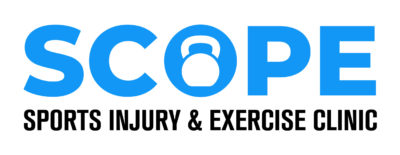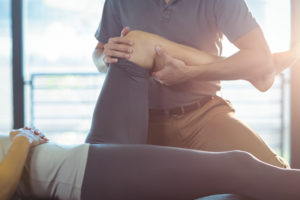Introduction
Anterior cruciate ligament (ACL) injuries are a common occurrence in sports and physical activities that involve sudden changes in direction, pivoting, or deceleration. The ACL is one of the key ligaments in the knee joint, providing stability and preventing excessive forward movement of the tibia (shin bone) in relation to the femur (thigh bone). Understanding the mechanisms of injury, types of surgeries, and the crucial rehabilitation process before and after surgery is vital for effective management and long term recovery. This blog aims to shed light on ACL injuries, their surgical treatments, and the rehabilitation protocols involved.
You can also check out our free guide to ACL recovery CLICK HERE where we show you every step of the process as well as plenty of tips and advice for a successful rehab journey. Find out more about our Back2YourBest Rehab Program – The most comprehensive rehab program for ACL rehab in Ipswich
I. Mechanisms of ACL Injury
Non-Contact Mechanisms
- Non-contact ACL injuries often occur during sports activities, when an individual unexpectedly changes direction or lands from a jump. Common mechanisms include:
- Plant and Cut: Abrupt deceleration combined with a pivot or change in direction places excessive strain on the ACL, leading to injury.
- Deceleration and Straightening: Rapid deceleration followed by an attempt to suddenly stop or straighten the knee can result in an ACL tear.
- Landing from a Jump: Inadequate knee flexion during landing can place substantial stress on the ACL, causing injury.
Contact Mechanisms
- Contact ACL injuries typically involve a direct blow to the knee joint, causing excessive forces that can damage the ligament. Examples include:
- Collisions: High-velocity collisions in sports such as football, soccer, or rugby can result in ACL injuries.
- Tackling or Impact: Forces applied to the knee during tackling or contact situations may lead to ACL tears.
II. Surgical and non-surgical Treatment Options
Surgical Approach:
- ACL reconstruction surgery is a common surgical intervention for significant ACL injuries, particularly if the individual wants to return to highly demanding physical activities or sports. The surgery involves replacing the torn ACL with a graft, typically harvested from the patient’s own tissue (autograft) or a donor’s tissue (allograft). Common graft options include the patellar tendon, hamstring tendon, or quadriceps tendon.
After surgery, a rehabilitation program is initiated to promote healing, restore range of motion, rebuild strength, and improve stability. The rehabilitation protocol typically involves several phases, progressing from gentle exercises to more challenging activities over time. Physical therapy and exercises are important components of the rehabilitation process to regain strength, balance, and proprioception.
Non-Surgical Approach:
- For some individuals with partial ACL tears or less severe injuries, a non-surgical approach may be considered. This approach often involves a comprehensive rehabilitation program focused on strengthening the surrounding muscles, improving joint stability, and enhancing neuromuscular control.
Non-surgical ACL rehabilitation usually includes rehab and exercise-based interventions. The primary goal is to restore functional stability and improve knee strength, particularly in the quadriceps, hamstrings, and hip muscles. Balance and proprioception exercises are also crucial to enhance joint control and reduce the risk of future injuries.
Non-surgical rehabilitation is often recommended for individuals who have minimal instability in the knee or those who are less physically active and do not participate in high-demand sports.
It’s important to note that the decision between surgical and non-surgical approaches depends on various factors, including the severity of the injury, the individual’s activity level and goals, their age, and any associated injuries or conditions. It is crucial to consult with a qualified healthcare professional, such as an orthopedic surgeon or a sports medicine specialist, to assess the specific situation and determine the most appropriate approach for ACL rehabilitation.
III. Preoperative Rehabilitation (prehabilitation)
Prehabilitation is rehabilitation in preparation for surgery (if you have chosen that option). The primary goals of prehabilitation is to ensure your knee is going into surgery with as much range of motion, strength and overall function as possible. We aim to have your knee being quiet and happy. This means, minimal to know swelling and good overall function.
The first phase of prehabilitation is;
Reducing Swelling and Restoring Range of Motion
- Preoperative rehabilitation focuses on minimizing swelling, restoring knee range of motion, and regaining muscle control. It may involve the use of cold therapy, electrotherapy, compression, and elevation, along with gentle exercises and stretches.
Strengthening and Neuromuscular Control
- Building strength and improving neuromuscular control are crucial before surgery. Exercises targeting the quadriceps, hamstrings, hip muscles, and core can help optimize knee stability and improve postoperative outcomes. We also aim to regain as much muscle mass as possible, depending on the timeframe we have to work within.
IV. Postoperative Rehabilitation
Initial Phase (Weeks 1-2)
- The early postoperative phase aims to control pain and inflammation while gradually restoring range of motion. Weight-bearing is initially restricted, and crutches are typically required. Rehab focuses on gentle exercises, quadriceps activation, hamstring activation, range of motion and core work. We also want to ensure you are training your upper body to maintain your physical health and fitness as best as possible.
Intermediate Phase (Weeks 3-12)
- During this phase, rehabilitation aims to increase knee range of motion, improve strength, and regain normal walking patterns. Exercises may include stationary biking, closed and open kinetic chain exercises, balance training, and proprioceptive drills.
Strengthening Phase (Months 3-9)
- The advanced phase focuses on enhancing strength, agility, and functional activities. Strengthening exercises such as knee extensions, squats, lunges and single leg work are progressively built upon. Activities such as running, jumping, and sport-specific drills are gradually introduced. Plyometrics, agility exercises, and resistance training are incorporated to prepare the individual for a return to sports.
Return to Sports Phase (Months 9-12)
4. The return to sports phase includes exercises and progressions that are specific to your sport. It is essential to ensure your overall fitness and physical preparation for the sport is enhanced and you are gradually (guided by your practitioner and coaches) returned to full training and then to full sports.
Prevention Phase (Months 12+)
5. After you have returned to your full time sport and have completed your program it is essential to maintain some prevention exercises into your weekly training.
V. Rehabilitation Considerations
Individualized Approach
- Rehabilitation protocols should be tailored to each individual’s specific needs, considering factors such as age, activity level, and associated injuries.
Patient Compliance
- Adherence to the prescribed rehabilitation program is crucial for successful outcomes. Consistency and commitment to therapy sessions, exercises, and gradual progression are essential.
Conclusion
Anterior cruciate ligament injuries can significantly impact an individual’s mobility and quality of life. Understanding the mechanisms of injury, available surgical and non-surgical options, and the importance of comprehensive preoperative and postoperative rehabilitation is crucial for optimal recovery. By combining surgical intervention with targeted rehabilitation protocols, individuals with ACL injuries can regain knee stability, strength, and function, enabling them to return to their desired level of physical activity.
To find out how we can help you with your ACL rehabilitation simply call us on 3812 2579 or book your initial appointment below.

